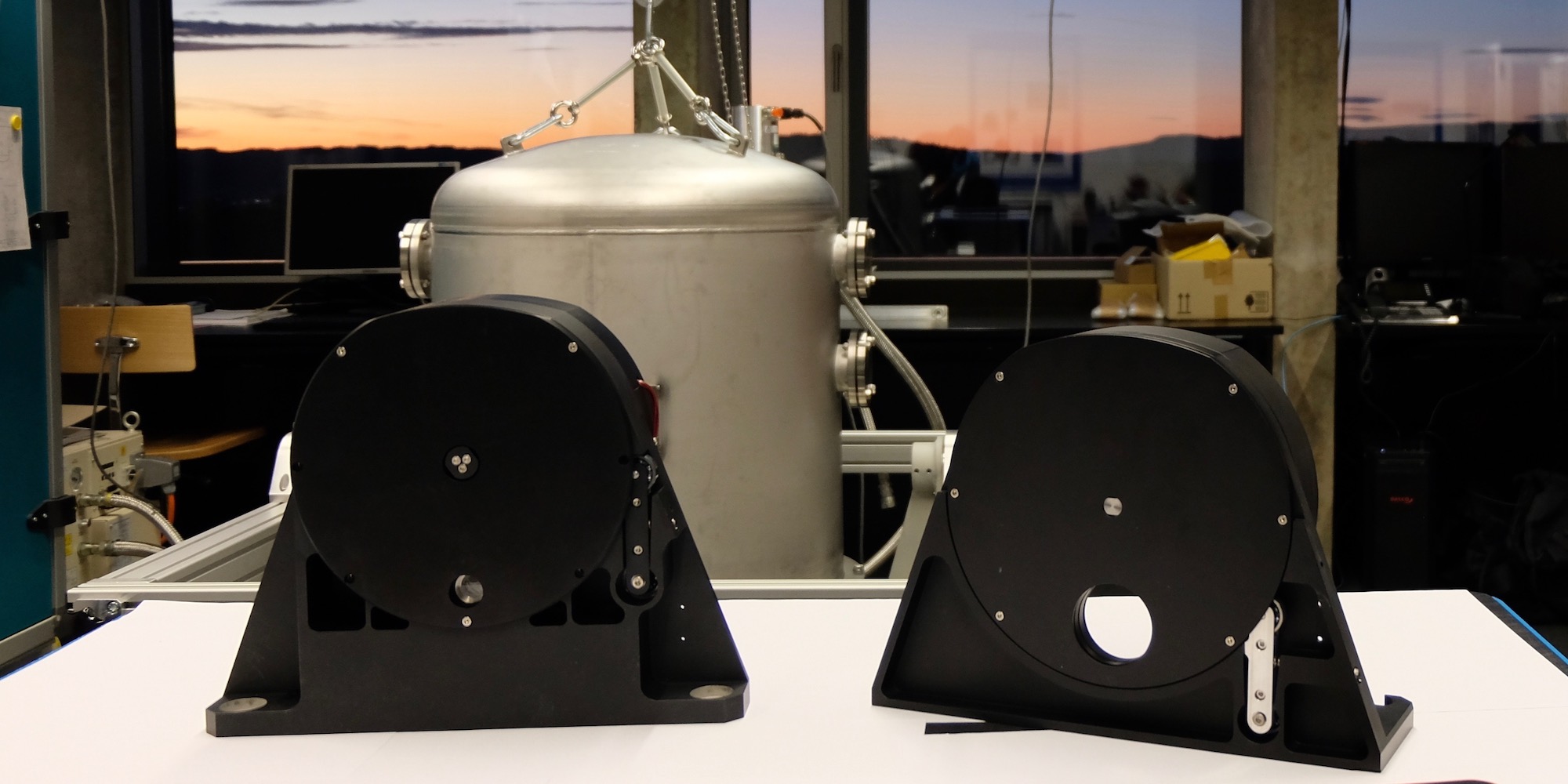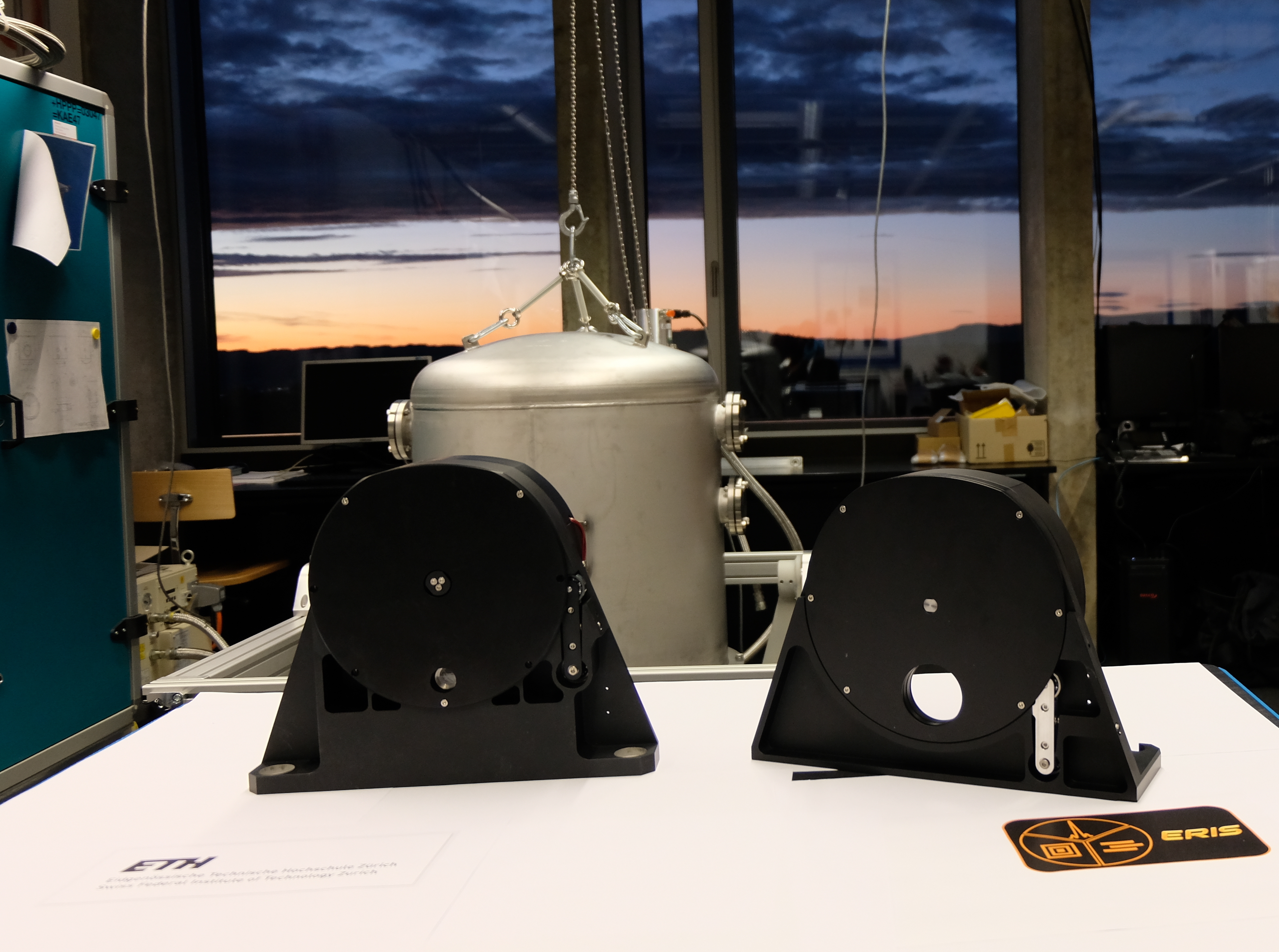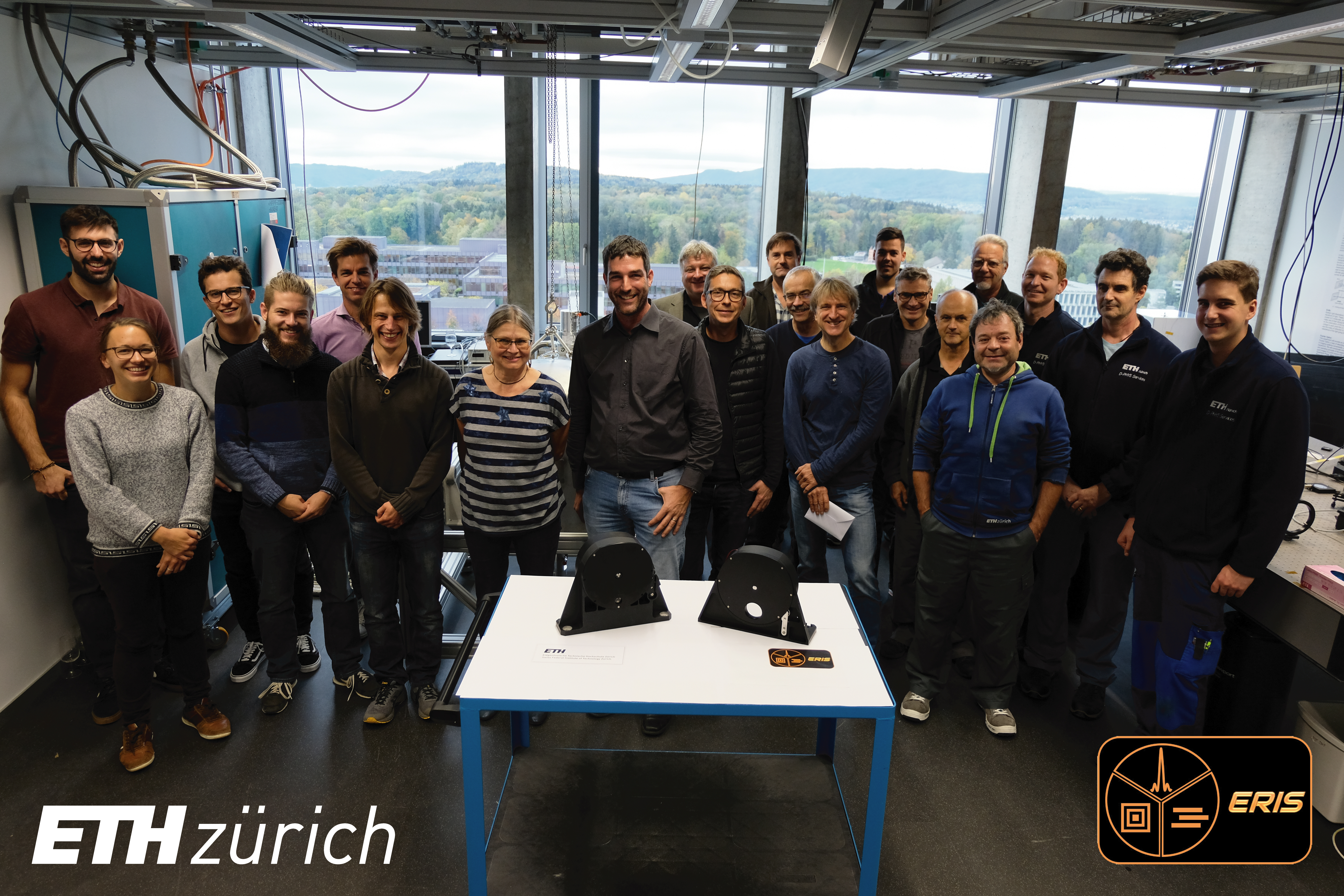Two wheels for a new instrument

The Laboratory for Astronomical Instrumentation at ETH Zürich has shipped its first cryogenic wheels that were developed for the new infrared instrument ERIS on the ESO Very Large Telescope. These mechanisms will hold various filters and masks that provide unique capabilities for direct imaging and characterization of exoplanets.

The Pupil and Filter Wheel (left) and the Aperture Wheel (right) in the Laboratory for Astronomical Instrumentation prior to delivery. (Photo ETHZ)
The Laboratory for Astronomical Instrumentation (part of the Star and Planet Formation group of the Institute of Particle Physics and Astrophysics at ETHZ), is involved in the development of the Enhanced Resolution Imager and Spectrograph (ERIS) instrument, a next generation facility for the Very Large Telescope of the European Southern Observatory (ESO). In collaboration with the Max Planck Institute for Extraterrestrial Physics (MPE), the UK Astronomy Technology Center (ATC) and financial support from the NCCR PlanetS, the group is responsible for the development of two cryogenic mechanisms that will hold various filters, coronagraphs and masks with a focus on high contrast and direct imaging and characterization of exoplanets.
The two wheels, the Aperture Wheel (APW) and the Pupil and Filter Wheel (PFW), will operate at 70 K (-203˚C) with a very high mechanical accuracy of a few of microns.
The wheels were designed and manufactured within the Department of Physics in collaboration with the Engineering Office and the Mechanical Workshop. The two wheels were tested at cryogenic conditions in the Laboratory for Astronomical Instrumentation using a custom-made cryostat for operations at 70 K and lower. The cryostat provides a window that enables optical measurements of the wheels at these temperatures which was essential for the verification of the requirements. After delivery of the mechanisms to the UK ATC in Edinburgh, they will be integrated onto the ERIS/NIX camera.
ERIS is a 1-5 μm instrument to be installed at the Cassegrain focus of the VLT UT4 for first-light in 2020. ERIS will benefit from the new Adaptive Optics Facility (AOF), which includes a deformable secondary mirror (DSM) to deliver high-Strehl imaging performance at the instrument focal plane. The instrument will provide both imaging and spectroscopic capabilities, and will be able to suppress the light of the star in different wavelength bands, possibly revealing much fainter companions. This allows for the detection and atmospheric characterization of gas giant extrasolar planets.

The team that worked on the design, manufacturing and testing of the mechanisms, with the two finished wheels in the Laboratory for Astronomical Instrumentation at ETH. (Photo ETHZ)
More information can be found in the following links:
Star and Planet Formation Group: http://www.schmid-group.ethz.ch/research/research-and-thesis-projects/eris.html
ESO: https://www.eso.org/sci/facilities/develop/instruments/eris.html
ERIS Wheels SPIE paper (2018): http://spie.org/Publications/Proceedings/Paper/10.1117/12.2313399
Categories: News, Uncategorized

